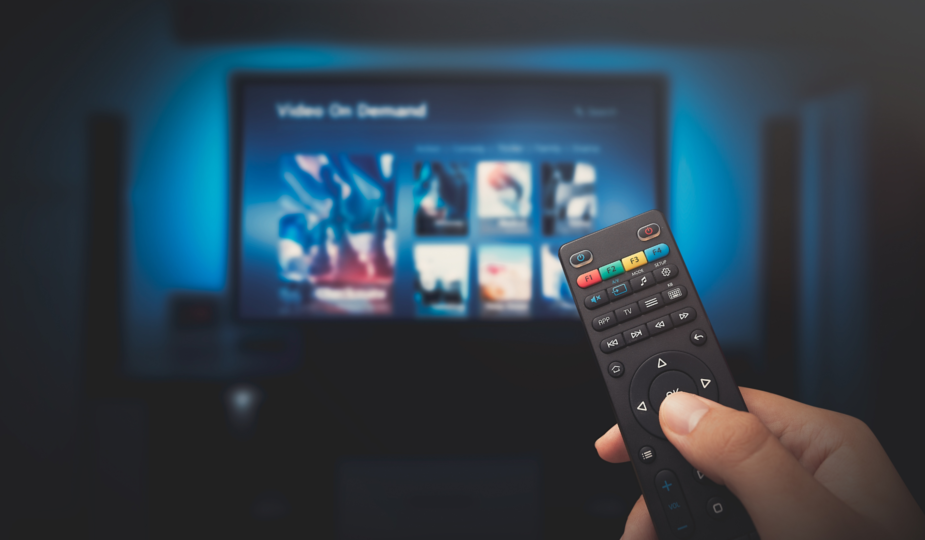Welcome to a battle of the screens! In one corner, we have traditional TV and film – our trusty old companions who’ve entertained us for decades. And in the other, we have streaming services – newer, flashier, and packed with options worldwide. The question on everyone’s mind is: which will reign supreme?
As entertainment buffs ourselves, we decided to put this debate to rest once and for all. So grab the popcorn, settle into our seat (or couch), and get ready to rumble!
Streaming and Traditional TV and Film
In the past, if we wanted to watch a movie or TV show, we had to go to the store and buy or rent a physical copy or wait for it to come on TV. This process is called “linear television.” But now, streaming is a new way to watch movies and TV shows.
Streaming is a digital video allowing us to watch movies and TV shows online without downloading them. It’s become increasingly popular in recent years as more and more people have access to high-speed internet connections.
There are two main types of streaming: traditional streaming and live streaming. Traditional streaming is when we watch a movie or TV show that’s been pre-recorded, like on Netflix. Live streaming is when we watch a movie or TV show broadcast live, like on Hulu.
There are benefits and drawbacks to both traditional and streaming television. Traditional television has been around longer, so there’s more content available. It’s also easier to find what we’re looking for since channels organize everything. And we don’t need an internet connection to watch traditional TV.
However, streaming television is becoming more popular because it offers some advantages over traditional TV. For one, it’s cheaper – we don’t have to pay for cable or satellite TV service. We can also watch shows from anywhere worldwide, as long as we have an internet connection. Many people prefer the convenience of streaming since we don’t have to worry about scheduling a time to watch our favourite shows.
Pros and Cons of Streaming Services
The debate over which is better, streaming or traditional TV and film, has been going on for years. There are pros and cons to both sides of the argument. Let’s take a look at some of the key points.
We can watch what we want when we want. This is the biggest pro of streaming services. With traditional TV, we’re at the mercy of the network’s schedule. If we miss an episode of our favourite show, tough luck. With a streaming service like Netflix, we can watch it whenever we want.
No commercials. This is another big one. Anyone who has watched traditional TV knows how frustrating it can be to sit through a commercial break after a commercial break. With streaming services, there are no commercials. We can watch our shows uninterrupted. It’s also cheaper than cable. Cable TV can be expensive.
One downside of streaming services is the requirement for a good internet connection. This can be the biggest drawback, as it affects the quality of streaming. However, if your internet connection is reliable, you can enjoy streaming your favorite shows without interruption. While streaming services continue to improve, they still don’t offer the same range of channels and shows as traditional TV. Additionally, some favorite shows may not be available in certain geographical locations. Fortunately, proxies and VPNs can help change your IP address to access shows from different regions. Platforms with features like “check what’s my IP” can assist in identifying your current IP address before switching to another one.
It’s easy to get overwhelmed. With so many streaming services and options, it can take time to decide what to watch.
Overall, streaming services offer a lot of great benefits. If we have a good internet connection and the necessary devices to stream, it’s certainly worth considering. It may not be for everyone, but for those who like controlling what they watch and when streaming is the way to go.
Pros and Cons of Traditional TV and Film
There are pros and cons to both traditional TV and film and streaming. Here are some of the key differences:
Traditional TV is more expensive to produce than streaming. This is because of the need for costly equipment, sets, and locations. Streaming can be done on a smaller budget using cheaper equipment and green screens.
Traditional TV has a higher barrier to entry. This means it is harder for new or independent filmmakers to see their work by a wider audience. Streaming has lowered the barrier to entry, making it easier for anyone with a camera and an internet connection to reach a global audience.
Traditional TV relies on advertising revenue to fund its productions. This can sometimes lead to compromising the quality of the content to please advertisers. Streaming services are mostly subscription-based, so they are less reliant on advertisements. This means that they can produce better quality content not influenced by commercials.
Traditional TV broadcasts live, which can lead to mistakes and technical difficulties being aired for everyone to see. Streaming services pre-record their content, so there are no such issues.
Audience Trends: Streaming or Traditional TV and Film?
There’s no denying that streaming services are on the rise, with more and more people ditching traditional TV and film in favour of streaming content. But who exactly is making this switch? And why?
A recent study by eMarketer sheds some light on the matter. According to the survey, most young adults are abandoning traditional TV and film in favour of streaming services. Nearly 40% of adults aged 18-34 say they’ve cut the cord in the past year.
There are several reasons why young adults are making the switch to streaming. For one, it’s more convenient than traditional TV and film. With streaming services, we can watch at our convenience without worrying about commercials or schedule conflicts. We can also watch on our terms, whether binge-watching a series over a weekend or watching just one episode a week.
Streaming services are also more affordable than traditional TV and film options. Most streaming services offer monthly subscription plans cheaper than cable packages. Many even offer free trials, so we can try them before committing to anything long-term.
There’s more variety available on streaming services than on traditional TV and film. With so many different shows and movies available at the click of a button, it’s easy to find something that appeals to our specific tastes. Whether we’re into comedies or dramas, action
Streaming Takes the Lead
It’s clear that streaming is the future of TV and film. The convenience and affordability of streaming services make them an excellent option for many people who want to access large libraries of content without spending too much money or taking up too much of their time. Traditional television still has its place in our lives, but streaming services are quickly becoming the preferred choice for many viewers thanks to their ease of use and wide selection. With more platforms entering the market each year, we can expect streaming to become even more popular in the years to come.










